Let's take a virtual journey to Japan with this delicious fish cake ramen recipe.
Homemade narutomaki, loaded with succulent white fish, sits atop tender ramen noodles in a flavorful broth for a comforting, fresh, and tasty lunch or dinner.
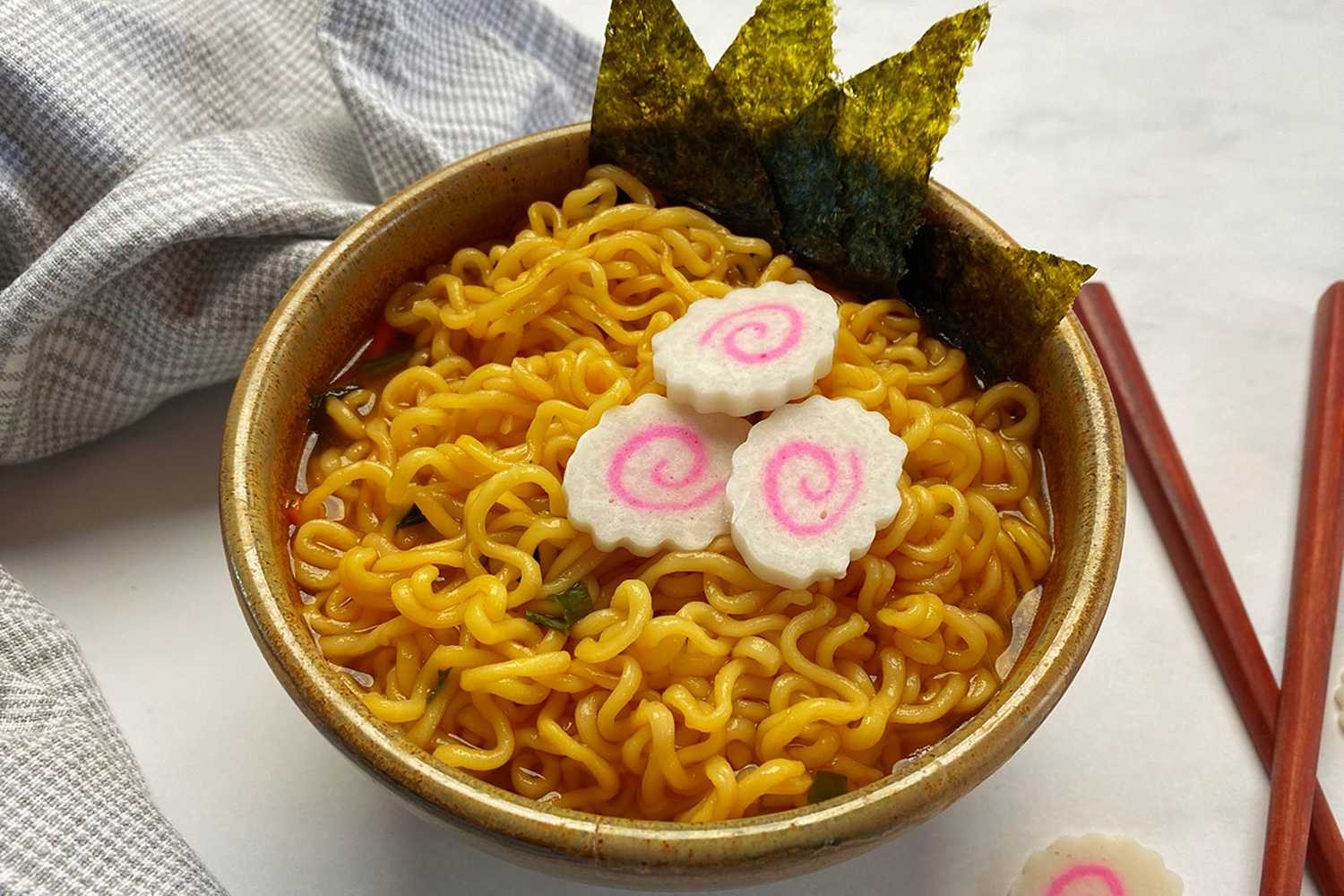
So whether you are a master sushi chef, or a newbie home cook looking to expand your repertoire and find something new and exciting to try your hand at, you will love this recipe. How simple it is to follow, and how delicious your fish cake ramen will turn out.
Table of Contents
Recipe Video
[adthrive-in-post-video-player video-id="V2lBWtp3" upload-date="2024-02-13T19:00:00.000Z" name="Fish Cake Ramen" description="Learn to make Fish Cake Ramen with narutomaki, a simple guide blending savory broth, noodles, and fish cakes for a classic, flavorful Japanese dish." player-type="default" override-embed="default"]
Why This Recipe Works
This fish cake ramen recipe works because it's simple, and allows you to get really creative in the kitchen.
While it might take a minute to perfect the rolling technique when creating homemade narutomaki, the recipe itself couldn't get any simpler. Simply throw all of the ingredients into a blender to create your fish paste. The rest is all in the techniques that you will develop and gain confidence in the more you make it.
Much like sushi, these homemade fish cakes are a lot of fun to experiment with, and you can enjoy mastering new techniques in the kitchen.
Ingredients
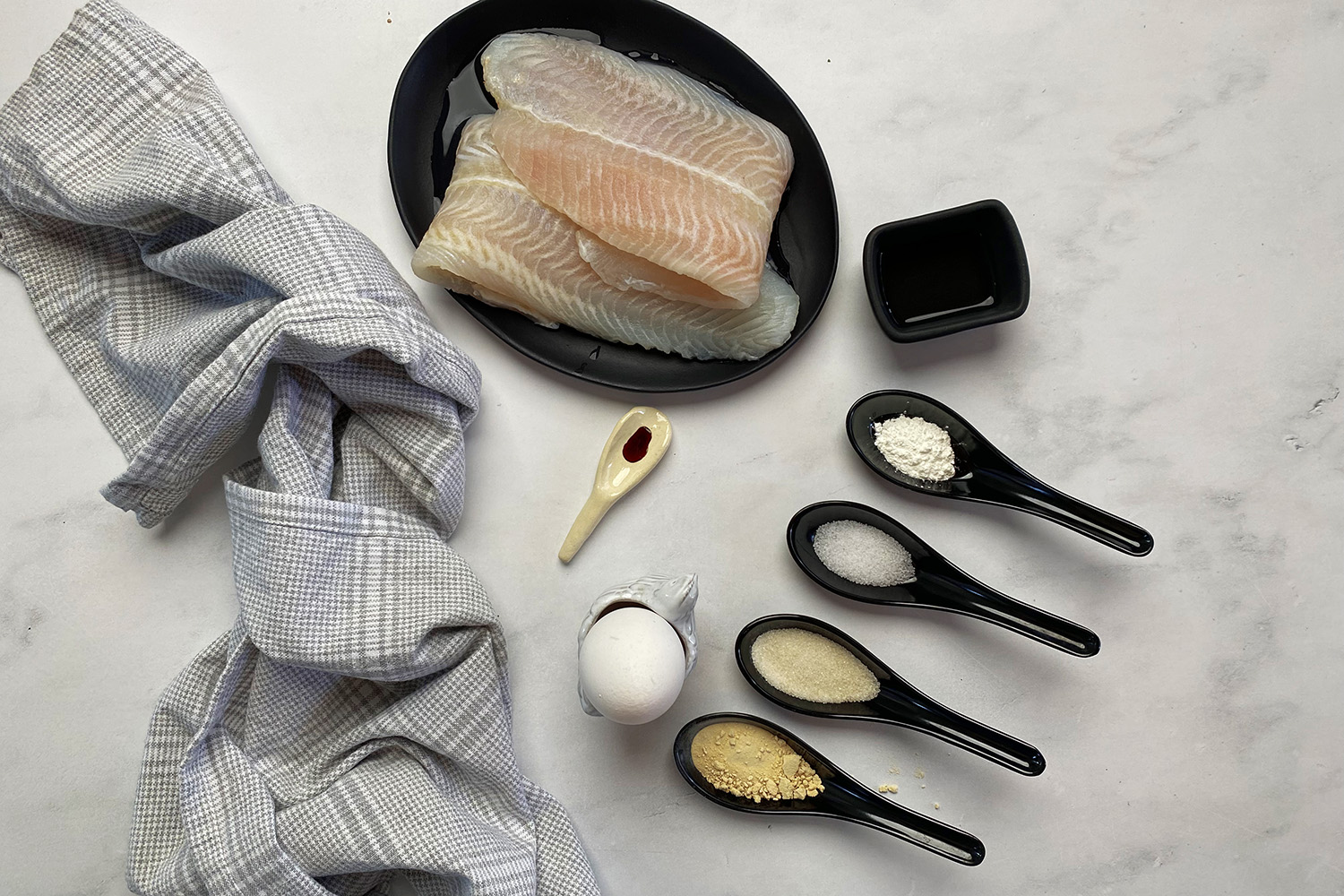
White Fish:
For this fish cake ramen recipe, choose a white fish with a mild flavor, like pollack, cod, or haddock. Ensure the fish is fresh, firm, and free from any undesirable odors. Fillets should be translucent and not discolored. Avoid any signs of browning or a strong fishy smell. Opt for sustainable and responsibly sourced fish to support ecological practices.
Egg White:
Egg white is used in this narutomaki recipe as a binding agent, enhancing texture, and providing structural integrity. Additionally, it helps the fish paste retain moisture during cooking, ensuring the fish cake's firmness and succulence.
Sugar:
Sugar is used in narutomaki to add a subtle sweetness to the fish paste and balance the savory elements, creating a more well-rounded and pleasing taste. Alternatively, you can use honey, maple syrup, sweet saki, or agave syrup for added sweetness.
Cornstarch:
Cornstarch is used in this fish cake ramen recipe to enhance the texture of the narutomaki, acting as a binding agent that provides firmness and prevents crumbling. Alternatively, you can use potato starch or tapioca starch to achieve the same outcome.
Onion Powder:
Onion powder can add a savory and aromatic element to your fish cake ramen. However, you can enhance the flavor profile of your narutomaki with a variety of seasonings. Garlic powder, ginger powder, sesame seeds, dash powder, and chopped nori can all add interesting elements to your fish cake ramen recipe.
Mirin:
Mirin is a sweet Japanese rice wine that is often used in cooking to add subtle sweetness and depth of flavor to dishes. If you don't have mirin on hand for your narutomaki recipe, you can substitute it with a combination of other ingredients, such as sake, dry sherry, white wine with sugar or honey added, or rice vinegar with sugar added.
Red Food Coloring:
While this recipe uses red food coloring to give the narutomaki its signature red swirl, you may choose an alternative food dye such as pure pomegranate juice, beet powder, pure beet juice, or cranberry juice as they are more natural.
Ramen:
You can prepare your favorite ramen recipe to add your narutomaki, or you can prepare a simple bowl of instant ramen to save yourself some time and energy in the kitchen.
How to Make Fish Cake Ramen
Step One:
Pat dry your fish fillet, cut it into strips, and blend it in a food processor.
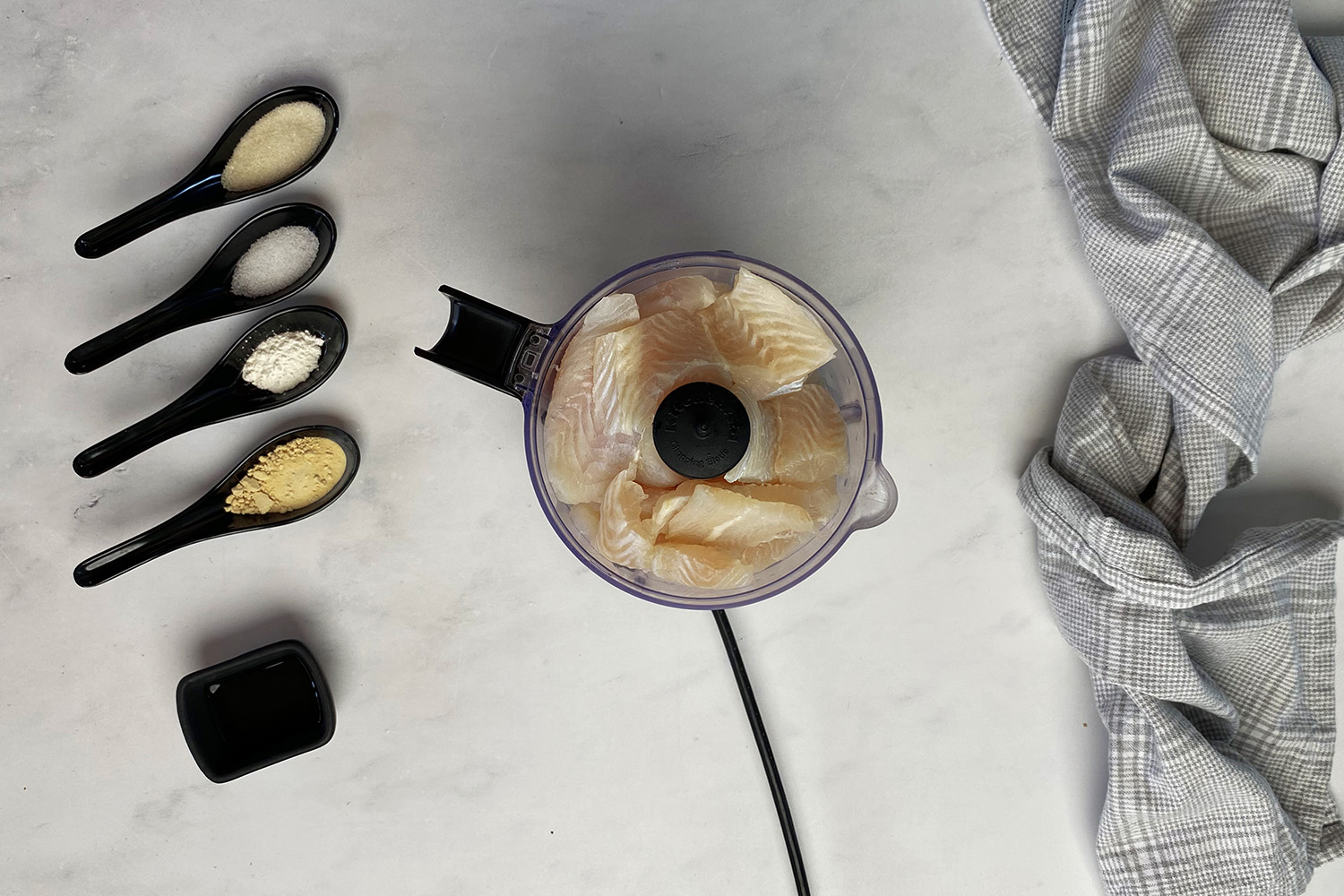
Step Two:
Add egg white, sugar, salt, cornstarch, onion powder, and mirin. Continue to blend until you have a smooth paste.
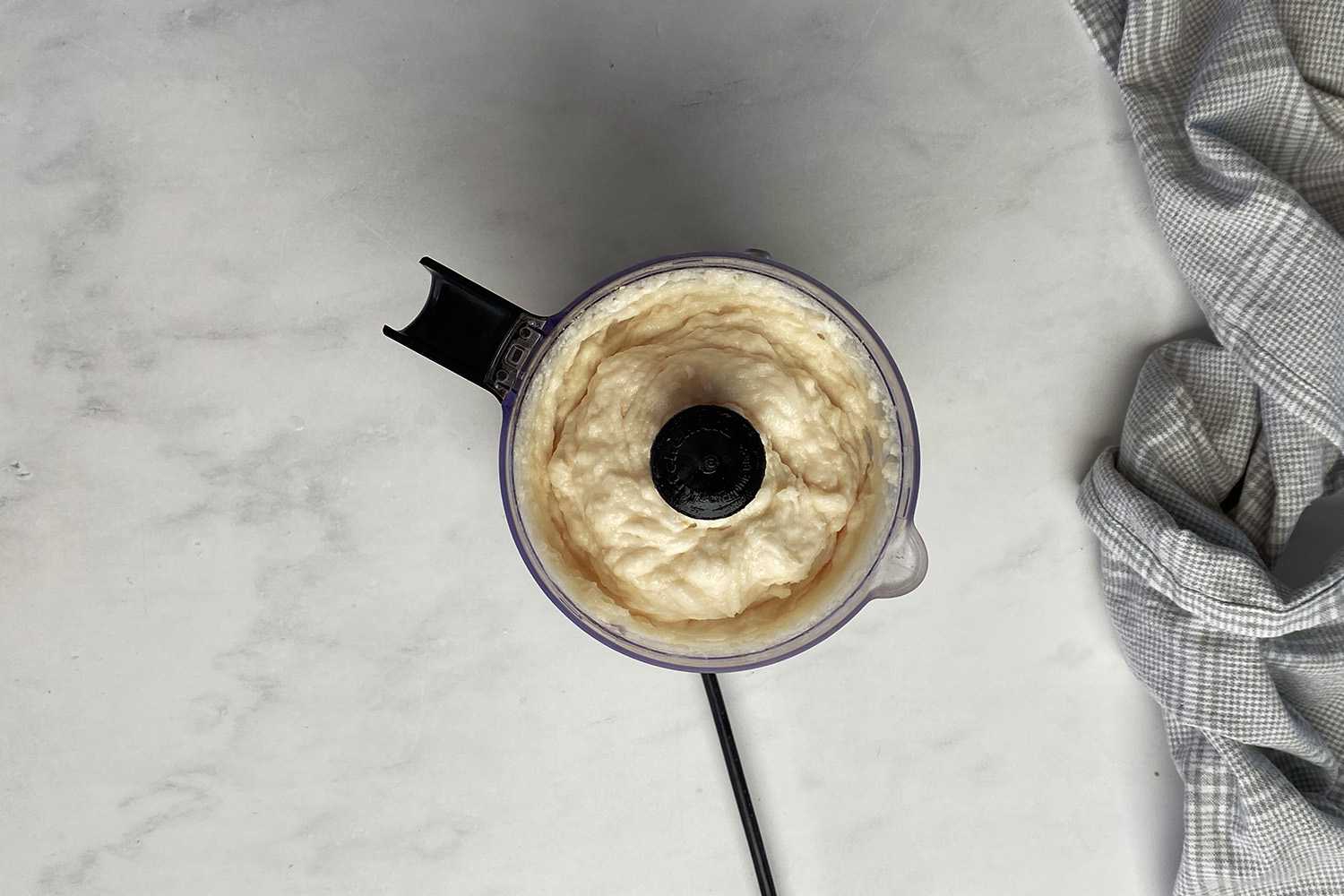
Step Three:
Scoop ¼ of the mixture into a bowl, add red food coloring, and stir to combine. This batch should be a light pink color.
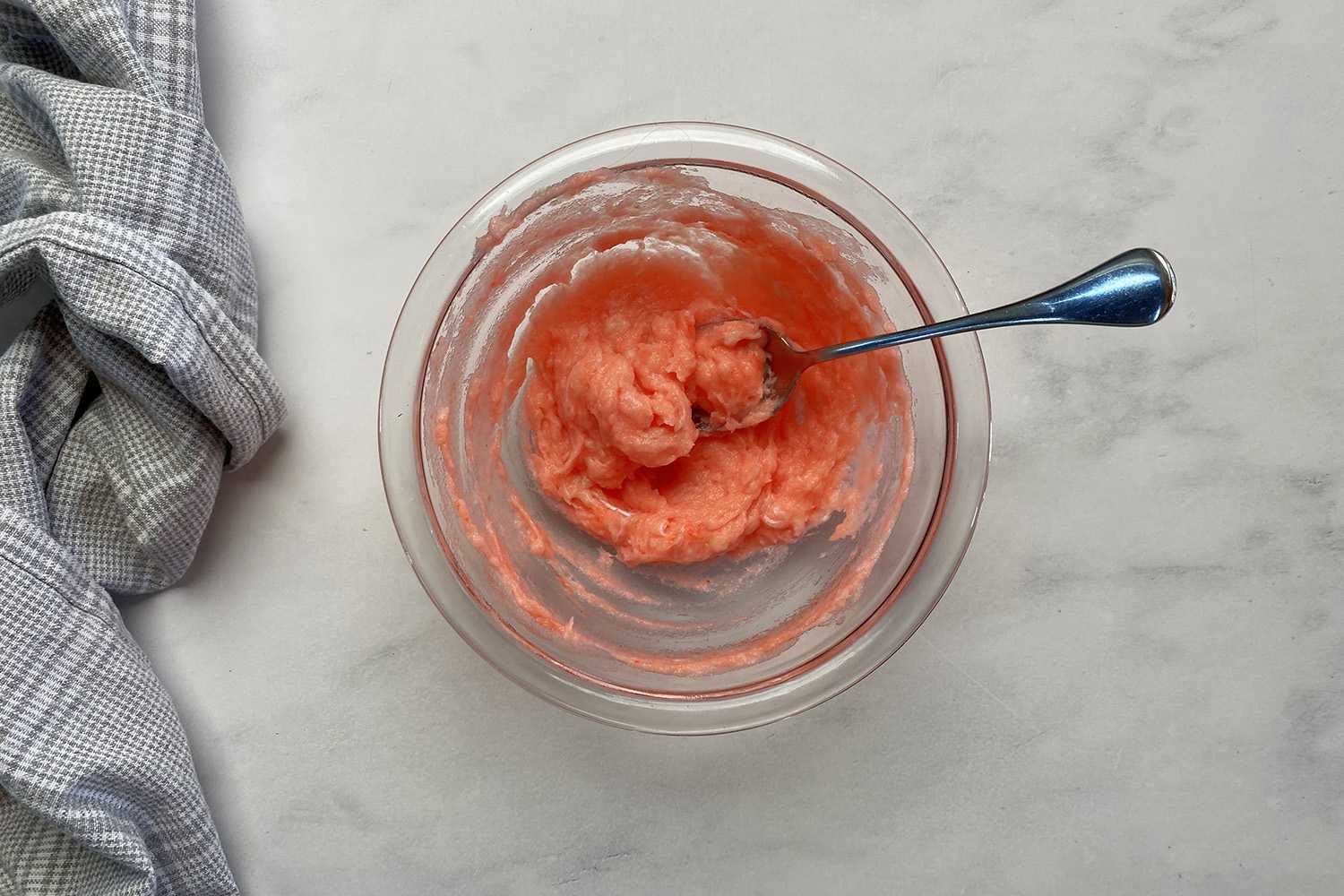
Step Four:
Cover a cutting board with plastic wrap and spread a layer of the remaining white paste on the board.
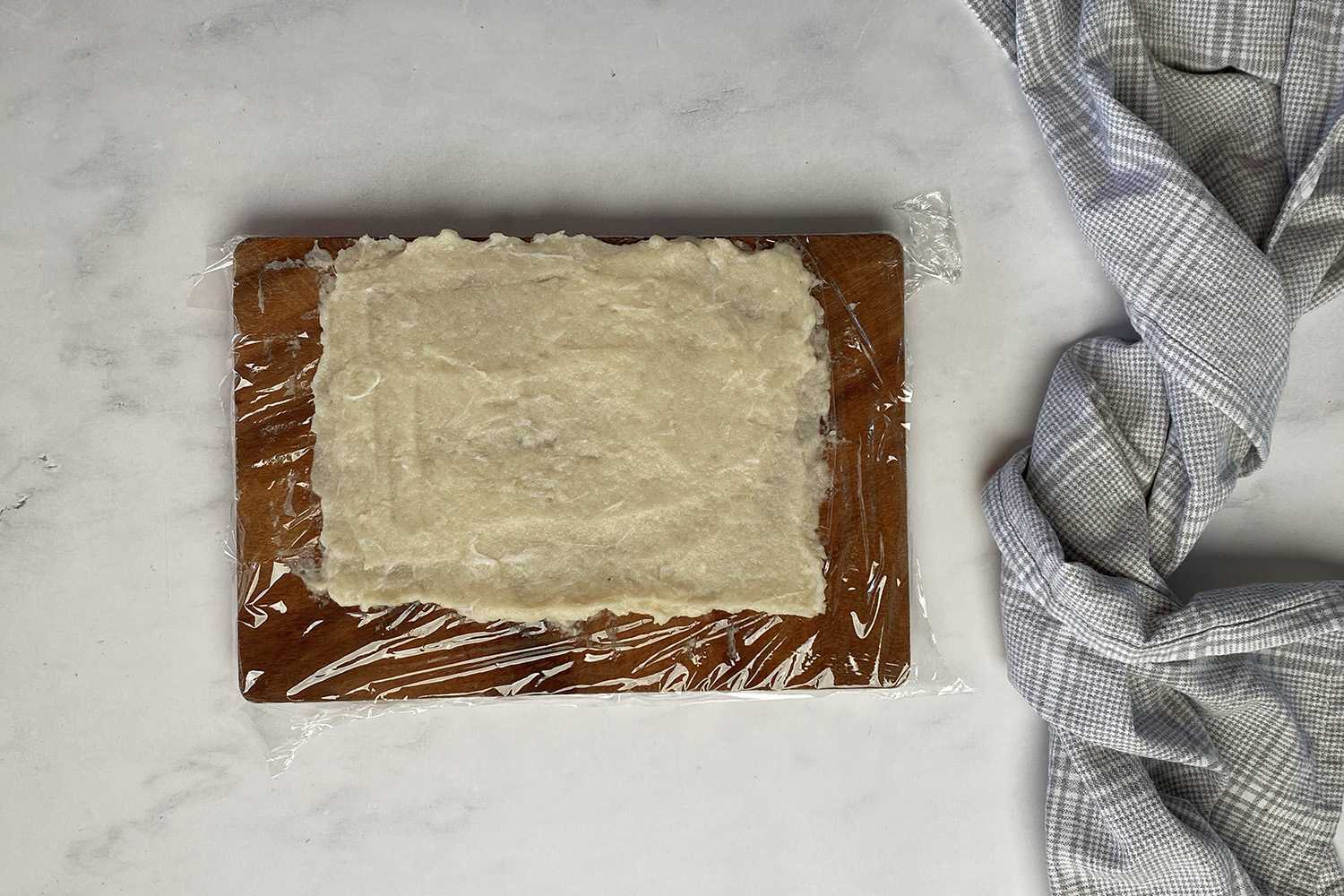
Step Five:
Layer a strip of red paste on top of the white, and starting on the longest side, roll it into a log, cover it with plastic wrap, and steam for 25-30 minutes. Repeat this process with any remaining paste.
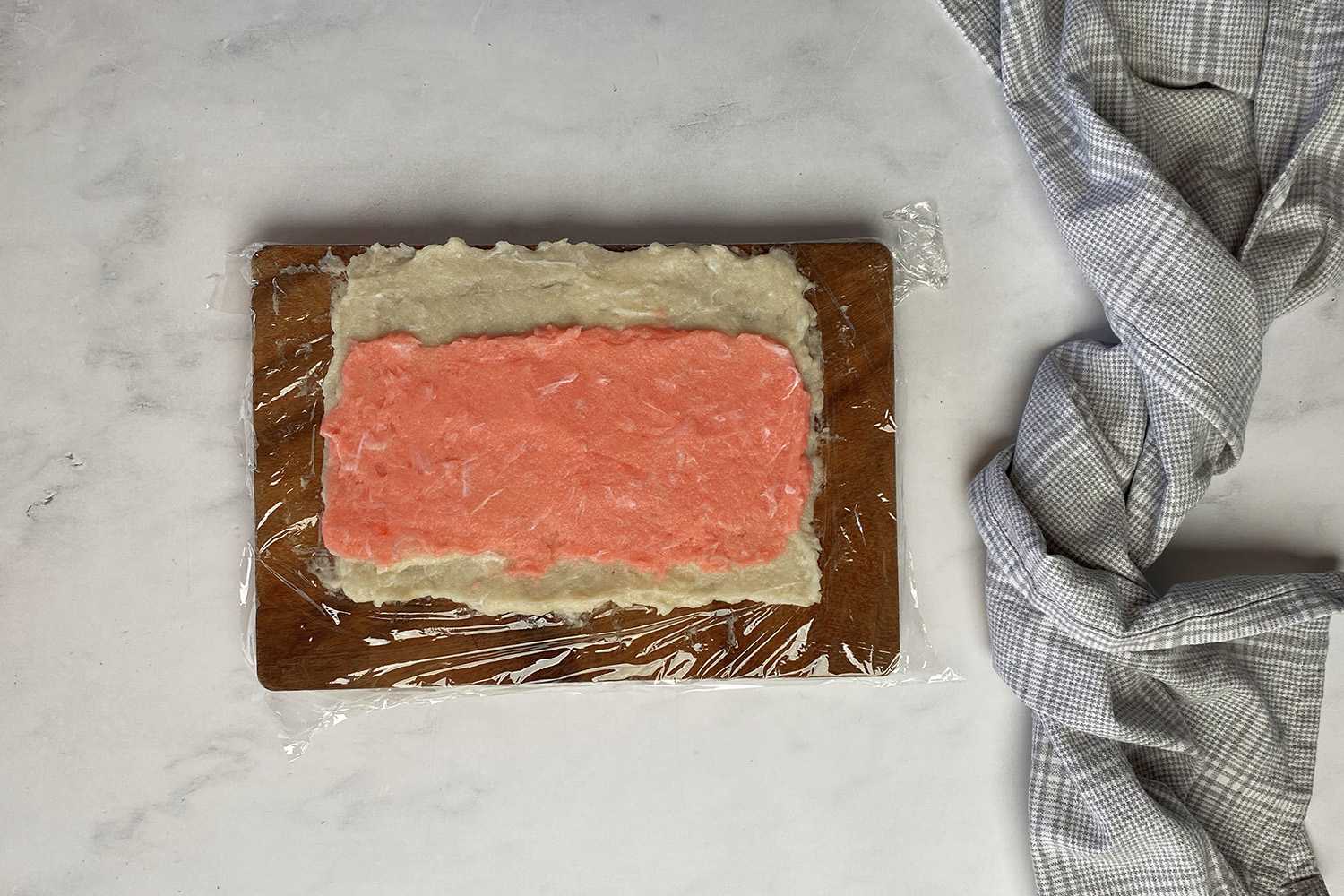
Step Six:
Remove your steamed logs from the steamer
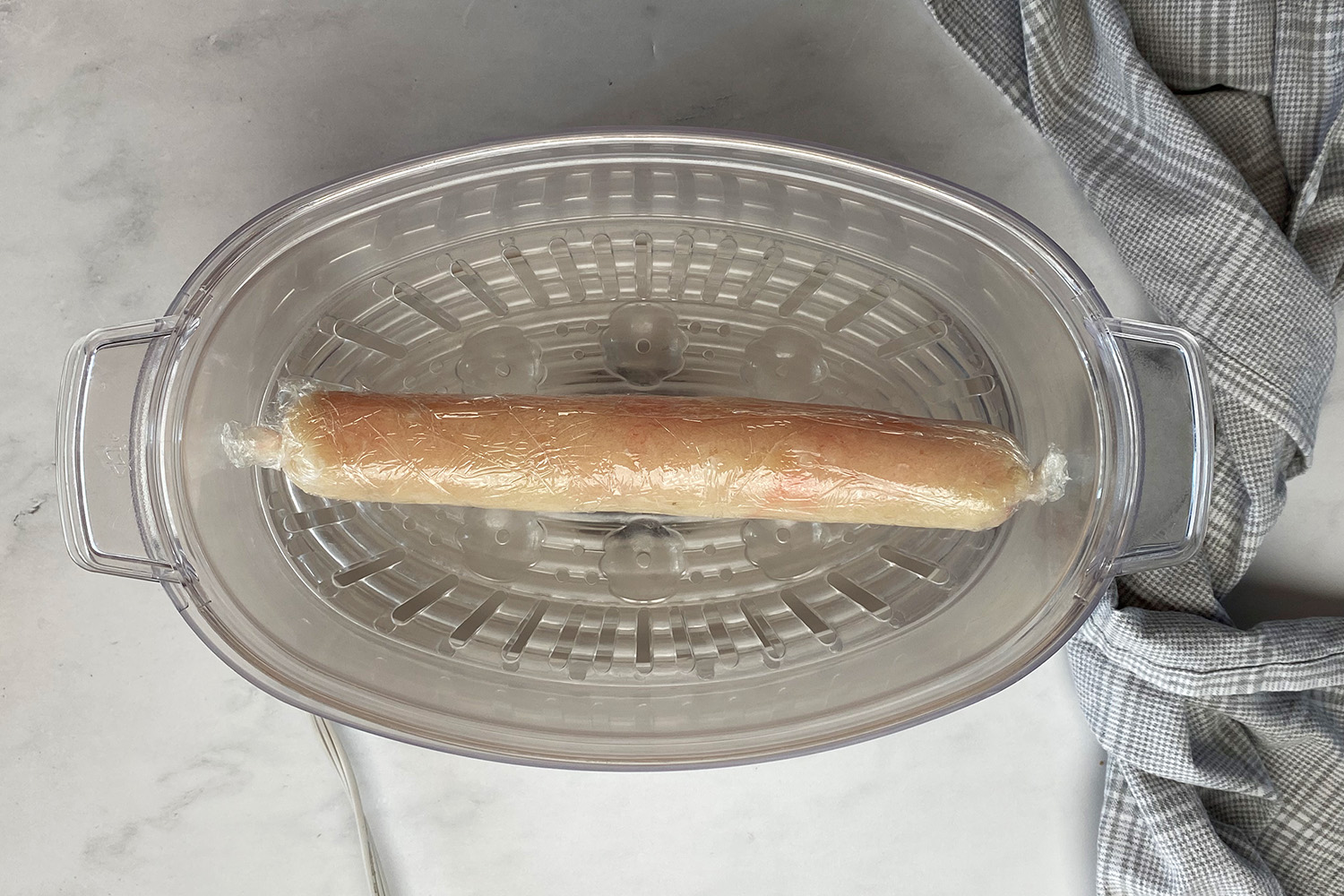
Step Seven:
Slice them into ¼"-½" thick pieces.
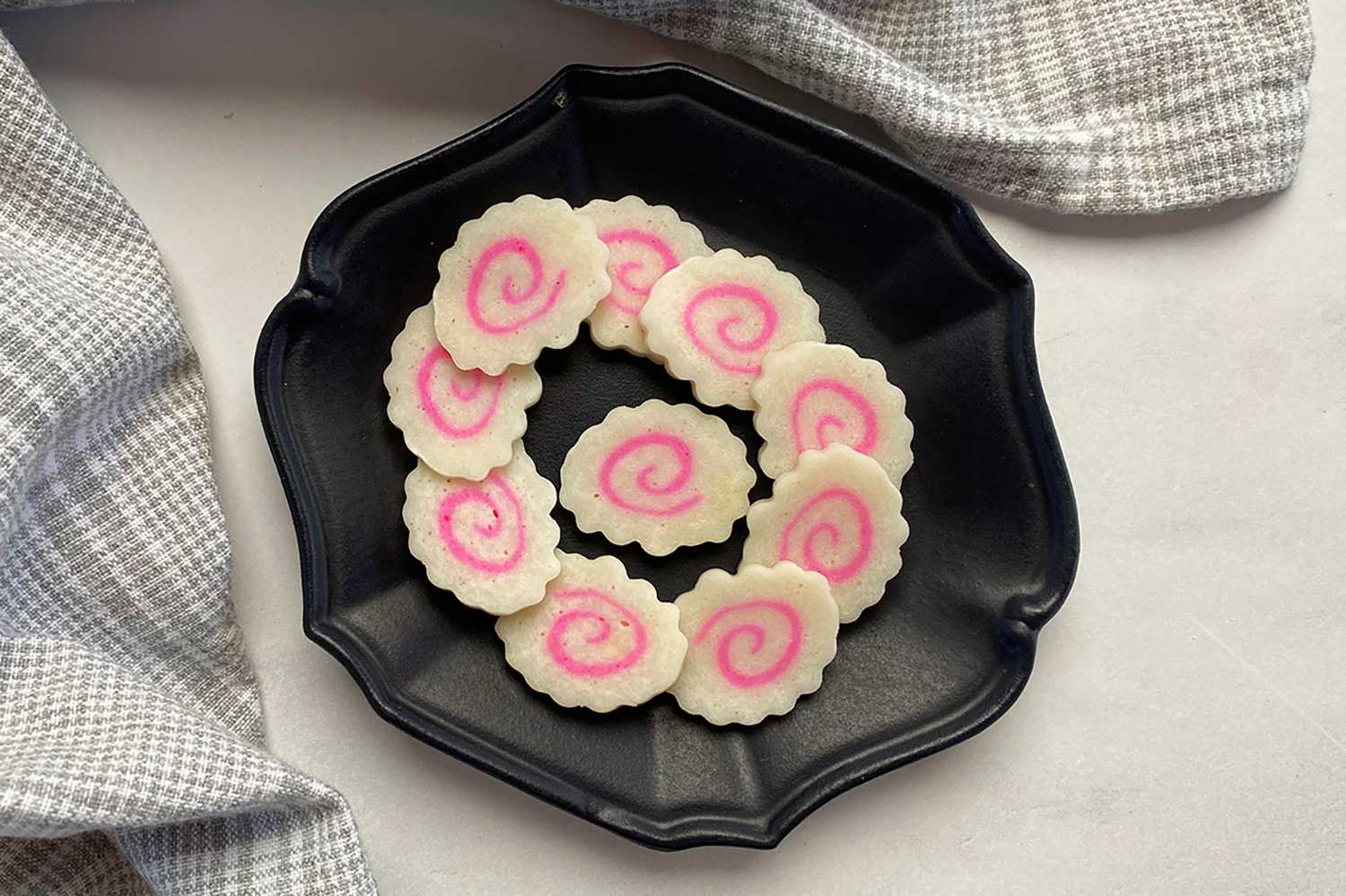
Step Eight:
Serve over a bowl of ramen, and enjoy!

Tips
- Aim for a consistent thickness when spreading the fish paste on the plastic wrap. This ensures even cooking and a uniform texture throughout the narutomaki.
- Roll the fish paste tightly to avoid any gaps or air bubbles. This helps create a better-looking spiral pattern and ensures that the layers stick together during cooking.
- Allow the narutomaki to cool completely before slicing. You can even refrigerate them for some time before cutting them. This helps obtain clean and well-defined slices without the risk of the roll falling apart.
What to Serve With Fish Cake Ramen
When serving fish cake ramen, there are a number of sides that will complement this narutomaki ramen recipe well. Any of your favorite ramen recipes will work well with these handmade fish cakes. A side of bok choy, green beans, or broccoli adds a vibrant, green element to the meal. Finish the dish off with a slice of Japanese cheesecake to cure your sweet tooth craving.

FAQs
Can I buy pre-made narutomaki for my ramen?
Yes, you can find pre-made narutomaki in many grocery stores or Asian markets. However, making it from scratch allows for customization and ensures freshness.
What other ingredients complement narutomaki in ramen?
How long can leftover fish cake ramen be kept fresh?
A bowl of fish cake ramen is meant to be consumed fresh. However, you can separate the broth, ramen, and fish cakes to store leftovers in airtight containers and store them in the fridge for up to 48 hours. Leftover narutomaki can be frozen for 2-3 months for longer-term storage. It is not recommended to freeze ramen as this could result in textural changes.
More Fish Recipes
If you are looking to add more protein and healthy fats to your diet, then you will love this collection of our favorite fish recipes for you to experiment with.

Fish Cake Ramen
Ingredients
- 7 ounces white fish fillet
- 1 egg separated
- 2 teaspoons sugar
- 1 teaspoon salt
- 1 teaspoon cornstarch
- 1 teaspoon onion powder
- 1 teaspoon mirin
- 3-4 drops red food coloring
Instructions
- Pat dry your fish fillet, cut it into strips, and blend it in a food processor.
- Add egg white, sugar, salt, cornstarch, onion powder, and mirin. Continue to blend until you have a smooth paste.
- Scoop ¼ of the mixture into a bowl, add red food coloring, and stir to combine. This batch should be a light pink color.
- Cover a cutting board with plastic wrap and spread a layer of the remaining white paste on the board.
- Layer a strip of red paste on top of the white, and starting on the longest side, roll it into a log shape, cover it with plastic wrap, and steam for 25-30 minutes. Repeat this process with any remaining paste.
- Remove your steamed rolls from the steamer and slice them into ¼"-½" thick pieces.
- Serve over a bowl of ramen, and enjoy!
Nutrition
Video
Notes
- Aim for a consistent thickness when spreading the fish paste on the plastic wrap. This ensures even cooking and a uniform texture throughout the narutomaki.
- Roll the fish paste tightly to avoid any gaps or air bubbles. This helps create a better-looking spiral pattern and ensures the layers stick together during cooking.
- Allow the narutomaki to cool completely before slicing. You can even refrigerate them for some time before cutting them. This helps obtain clean and well-defined slices without the risk of the roll falling apart.